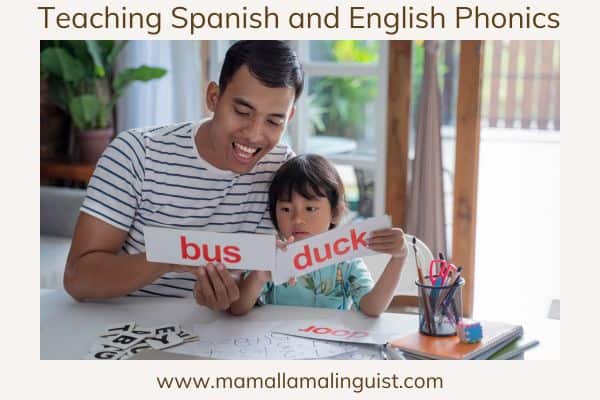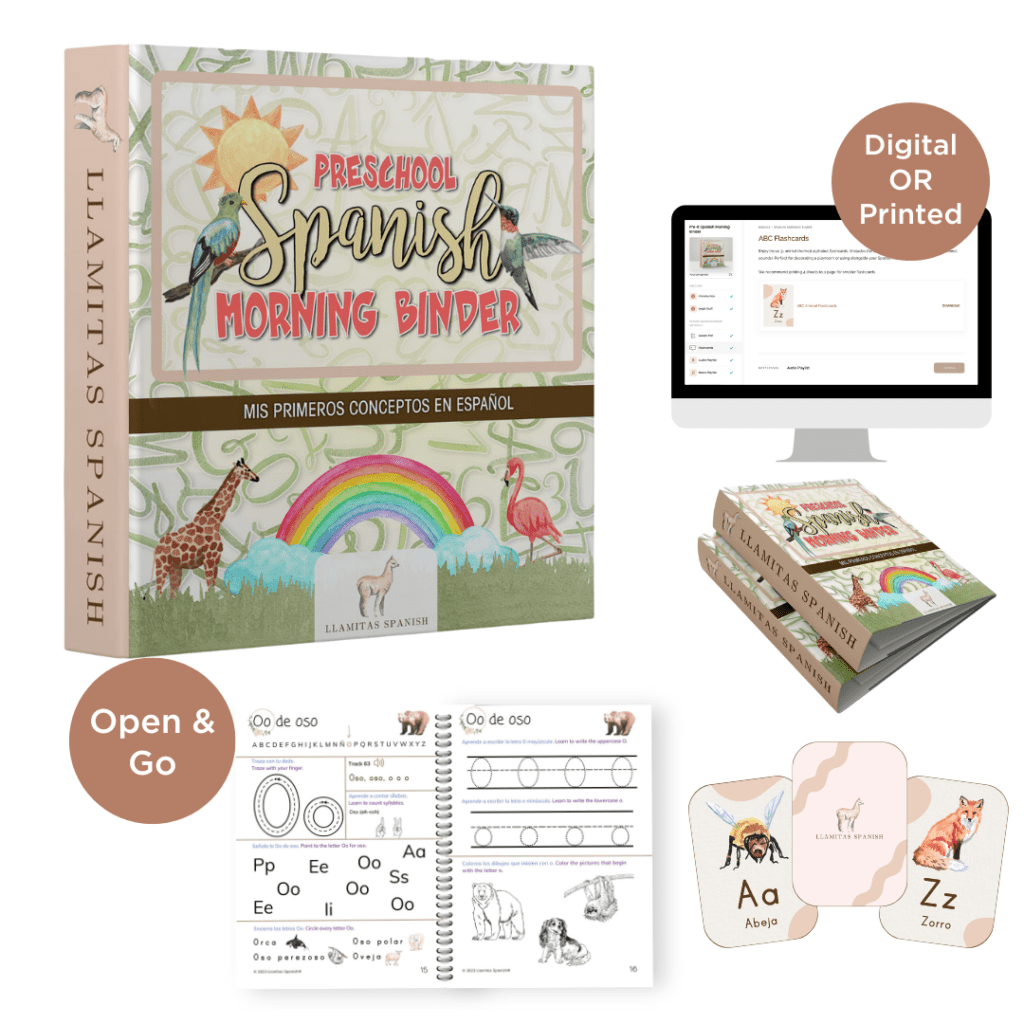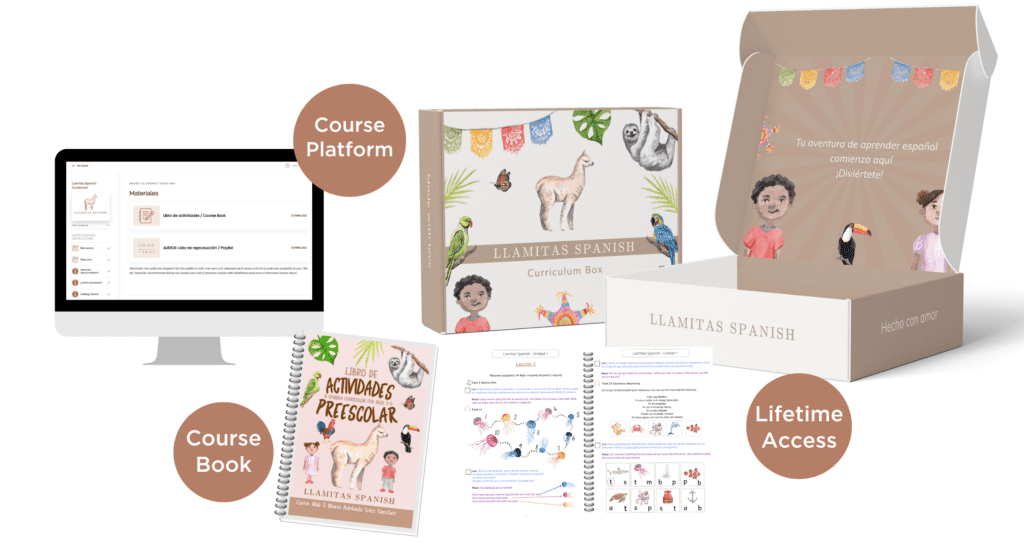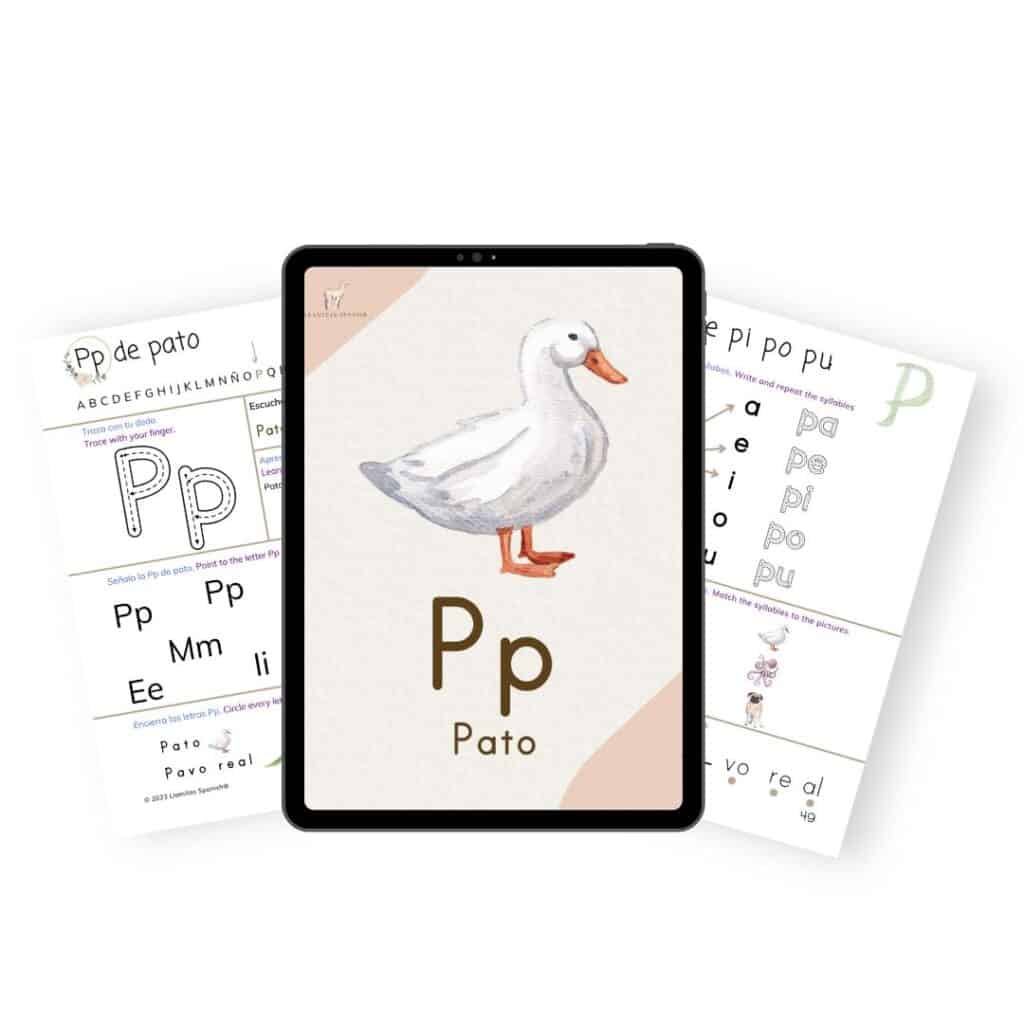In this post: Tips and resources for bilingual parents who are concerned about how navigate teaching phonics in two languages: English and Spanish.
The question of how to teach phonics (the alphabet and letter sounds) to children who are growing up in a bilingual home comes up again and again, as our world becomes more cosmopolitan, globally-based, and multi-cultural.
Many parents ask whether teaching English and Spanish phonics simultaneously will confuse kids. They ask if there is a ‘right way’ to go about it.

For example, is it recommended to teach the alphabet and phonics in the minority language first? Or is there a way to teach the letter sounds from both alphabets at the same time? Which is the most effective way to help kids master the basics in each language?
…And what about the naysayers who believe that bilingualism causes confusion in children?
Let’s look at how learning phonics in English and Spanish differ, and how you can best structure phonics lessons for your little linguista in both languages.
And while we’re at it, let’s also bust all of those myths about bilingualism creating confusion in children.
What are the Differences Between English and Spanish Phonics?
Spanish and English have the same alphabet, with the exception of the extra letter ‘ñ’ in Spanish. Yet there are many distinctions in letter sounds.
The most significant difference between the English and Spanish languages is that, while both alphabets have only five vowels in them, Spanish sticks to only the five basic vowel sounds. There are no hidden silent vowels in Spanish, and so it is a far more ‘transparent language’.
In English, however, those five little vowels become far more versatile, and are used to produce over 14 different sounds or phonemes, which can even vary slightly based on regional differences. In English, there are even vowels that remain silent!
The advantage for children who learn both languages simultaneously at an early age is that they are more easily able to overcome the difficulty that many native Spanish speakers have when learning English, in differentiating the distinct phonetic differences between vowel sounds in words such as sleep and slip.
For native English speakers, learning phonics in Spanish becomes really easy, since Spanish is so much simpler than English in this sense. For this reason, it makes sense to teach Spanish phonics first, particularly when children are still very young.
To help bilingual families like ours speed up the process of learning letter sounds in Spanish, we have developed a Spanish Preschool Binder that teaches Spanish letter sounds, syllables and the alphabet in ways that prove to be a ton of fun.
This binder is gentler and less academic than our Level 1 Curriculum, making it easier for kids to gradually master the identification of letters, as well as the various phonemes before they progress to more complex activities such as reading and spelling.
Tips on Teaching Phonics to Bilingual Children
While every family is unique, and each may have their own approach, what has worked best in our family was focusing on teaching phonics in one language first, particularly before our kids started school.
We chose to begin with Spanish, since it really is so much easier for kids to learn the five basic vowel sounds and to begin identifying letters with their sounds in Spanish.
In fact, learning letters and their sounds in Spanish couldn’t be easier once you’ve got the right set of tools to teach with. The best way to get started is by enrolling in our fully-enriched Llamitas Spanish® Curriculum that helps parents by providing a comprehensive guide to your child’s Spanish education.
The curriculum provides no-prep lessons that are easy to facilitate and fun to do! We provide a deep dive into Spanish phonics as well as math, literacy, music and more! It comes with a wide variety of cultural resources that are available for you to use to enhance your child’s Spanish language learning journey.
We also provide extensive list of tools and resources on the blog for practicing phonics and improving Spanish pronunciation while having fun and discovering poems, stories, and nursery rhymes, such as the following:
- Mama Llama Linguists’ Spanish Poetry Books
- Mama Llama Linguist Classic Spanish Folk Songs
- Mama Llama Linguist Spanish Nursery Rhymes
Once our kids began getting English education in school, it became even more important to focus our home education on Spanish.
In our home, we practiced phonics in Spanish until the kids mastered it, then introduced English phonics. We structured it so that the English phonics lessons (always a bit longer and more complex, thanks to those 14 versatile vowel sounds) would follow the Spanish lesson.
I would use a bell or other fun sound to signal when we were switching to English. I truly believe this helped my kids create a mental mark in their brains that made it easier for them to approach each language on its own terms.
Another approach might be to teach Spanish and English phonics on alternate days or at alternate times of day. No matter how you choose to do it, make sure that you establish a clear and easy way for your child to flip a switch in their brain as they go from one language to the other.
After a while, this becomes second nature, as many of us bilingual adults can attest to, and the child will be able to flow seamlessly between both languages, as the switch eventually resets itself in our brains automatically.
Busting the Myths
To address the myth that bilingualism causes learning delays or confusion in children, the reality is actually that all the research done on this subject confirms the exact opposite.
In fact bilingual kids:
- Display better cognitive abilities than their monolingual classmates at any age.
- Tend to learn certain pre-reading skills earlier and more quickly than monolingual kids.
- Exhibit heightened creativity, and do better at memorization and multitasking than their monolingual peers.
- Develop metalinguistic skills earlier than monolingual children by being exposed to multiple languages simultaneously from early childhood, leading to improved reading skills overall.
- Tend to have a wider range of vocabulary words than monolingual children of the same age
In general, children exposed to more than one language early on are quick to learn the alphabet and exhibit strong spelling skills in both languages.
Beyond the academic advantages that bilingual children enjoy, bilingualism also improves an individual’s lifelong ability to multitask and resolve conflicts, skills that not only benefit individuals, but also benefit society at large.
If you’d like to learn more about raising bilingual children and the advantages that bilingualism provides for your child, be sure to check out our resources for parents that support you in your journey to raising your child in two languages.
We also share our experiences and those of other families committed to broadening their horizons by living bilingually!
Further reading:






